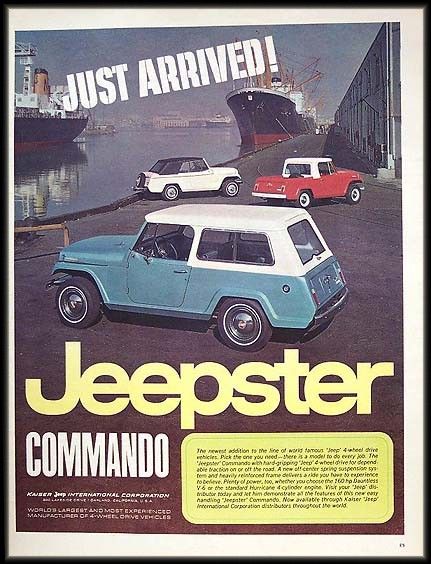Why did Ford build the Bronco? Beyond the obvious answer that they wanted to make money there are more explanations as to why built it and why they built it the way they did.
The Bronco was not the first SUV, although it was and is again a very popular one.
We should start by defining what a Sport Utility Vehicle is. One of the most important attributes is the size, an SUV must be able to carry additional passengers beyond the front seat. The SUV must also be an off-road capable vehicle. 2-wheel drive station wagons are not SUVs.
Many will tell you that the International Scout is the 1st SUV, but that is not true, we will get to that in a minute.
While the military Jeep and its civilian brethren did not start out as SUVs per se, they are, however where our story starts.
The Jeep concept dates back to 1940 when the U.S. Army put out an RFQ for a 4-wheel drive "reconnaissance vehicle". Several companies including Willy's Overland and Ford Motor Company submitted designs.
A company by the name of Bantam had a design that won the contract, but there was a problem. Bantam didn't have the manufacturing capability or experience, so Willy's Overland and Ford built them (Ford built a little less than 1/2 the Jeeps). They did request that the new vehicles resemble the Ford concept (called the GPW).
After the war Willy's discovered the returning GIs wanted to buy a Jeep like they used in the war. So Willy's introduced the "Civilian Jeep", the CJ-2A in 1945 and soon got feedback. These GIs were starting families and they wanted the Jeep's capability with more room and comfort.
In 1946 Willy's introduced the "station wagon", a new concept. Originally in 2-wheel drive, a 4-wheel drive model was added in 1949 and thus the Sport Utility Vehicle was born.
It was larger than a CJ Jeep, but still small enough to fit down tight trails or in supermarket parking stalls. It could carry cargo yet had a full-length roof and was 4-wheel drive.
During this time, Jeep also introduced a 2-wheel drive convertible wagon, known as the Jeepster and a pick-up. Take note of this, it is important to the story later.
In 1960 International Harvester, a tractor company, introduced the Scout 80 sport utility vehicle. There should be no doubt that the Bronco was designed as a direct competitor to the Scout. Beyond the similar size and look, there were other semblances.
When introduced the Scout came in three models, a full top wagon, a 1/2 cab pickup, a convertible wagon and a topless roadster. This combined the attributes of the Willy's Wagon, Pick-up and Roadster models into one vehicle. Which made it cheaper to produce.
Jeep did the same when they introduced the Jeepster Commando in 1966.
The Scout 80 came with removable doors & hardtops along with a fold down windshield (any of this remind you of a Bronco?). It is no surprise that the classic Bronco and the Scout 80 are often confused by the uninitiated.
While the Scout 80 was a great vehicle and tough to boot, it didn't quite catch on. Customers wanted more comfort.
Dearborn was also watching and planning. Circa 1963 Ford sent out questionnaires to more than 300 4-wheel drive clubs, specifically targeting Scout and Willy's wagon owners asking them, what they would change about their SUVs.
The list of desires included:
- Tighter turning radius
- Better seats
- Increased highway speeds
- Smoother ride
- Watertight cabins
- Availability of upgrade parts











No comments:
Post a Comment